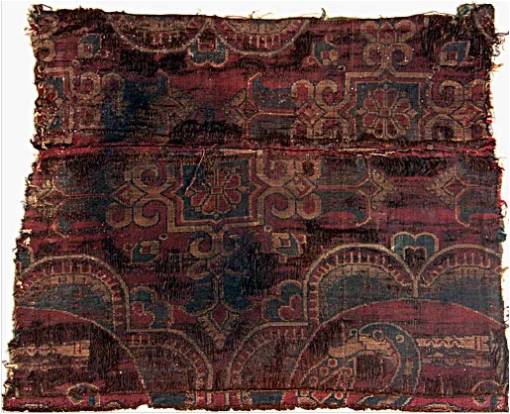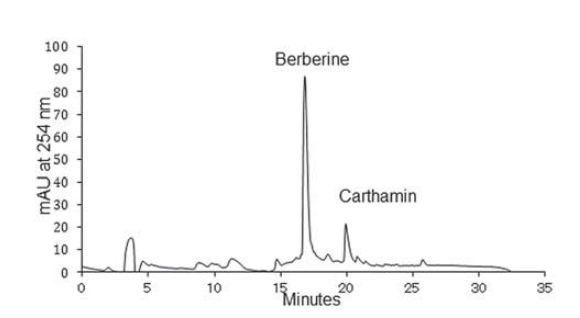Difference between revisions of "CNSM 2703, Samite with bird roundels on a red ground , China (Tang dynasty, 618-907 CE)"
| Line 6: | Line 6: | ||
China National Silk Museum, Hangzhou, China. #2703. | China National Silk Museum, Hangzhou, China. #2703. | ||
| − | [[File:CNSM 2703.jpg|center|frame|Image of the samite fragment. ]] | + | [[File:CNSM 2703.jpg|center|frame|Image of the samite fragment. © China National Silk Museum, Hangzhou, China ]] |
== Summary of results == | == Summary of results == | ||
Revision as of 13:33, 5 September 2017
Artifact Information
This object is a fragment of part of a samite with roundels of birds, which includes a bird with a ribbon in its beak in each roundel. The medallions are surrounded with symmetrically placed flowers. Similar textiles dating back to Tang dynasty, have been discovered in Tibetan tombs in Dulan, Qinghai province [1].
China National Silk Museum, Hangzhou, China. #2703.
Summary of results
HPLC profile of a low temperature (~50 °C) extract of fibers from a red 19th century Chinese silk shawl showed that both carthamin (red) and berberine (yellow) dyes were detected. Carthamin was most likely come from safflower and berberine from a plant that contains alkaloids, for example amur cork tree or Chinese cork tree [2]
HPLC profile
References
[1] Worth, S.(1986) "Embroidered China crepe shawls: 1816-1863; Dress 12:43-54.
[2] Richard A. Laursen and Chika Mouri "Decomposition and analysis of cathamin in safflower-dyed textiles", e-Preservation Science 2013, 10, 35-37.

